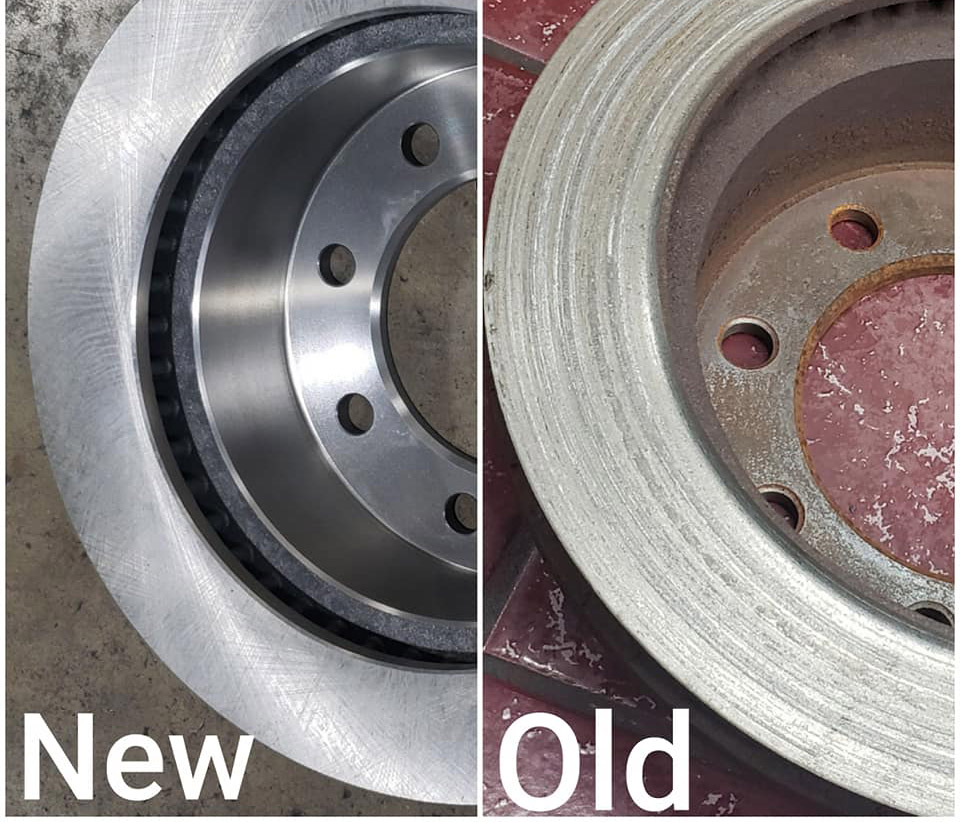Brake rotors — otherwise known as brake discs — provide a friction surface for brake pads to grab onto. Disc brake rotors are metal discs that work together with the brake pads and calipers to slow the vehicle. Brake rotors are bolted directly to the wheel hub, so they spin in direct relation to wheel speed. The rotor is sandwiched between two brake pads. When the brake pedal is depressed, the calipers squeeze the brake pads against the spinning rotors to slow and stop the wheels and the vehicle.

Modern cars are equipped with either two-wheel or four-wheel disc brakes. A four-wheel disc brake system has a rotor at each wheel, whereas a two-wheel system has rotors in the front, and drum brakes in the back.
Two basic types of rotors are currently in use: solid and vented. Solid rotors are one solid piece, like the name implies. This relatively inexpensive type of rotor is generally used in small cars. Vented rotors are cast with fins between the two disc faces. The fins are designed to distribute air to cool the rotors, improving braking performance.
Since rotors work to slow the vehicle by using friction from direct contact with the brake pads, they do wear out over time and will eventually need to be replaced.

Scoring and grooves in a rotor can impede its capacity to slow the vehicle, as well as cause vibration and pulsation that can be felt in the pedal. Plus, when the pedal no longer interacts with the brake rotor, the ensuing vibration may make it feel like the car will not stop at all. Inability to stop or even extended stopping distances can be highly dangerous, especially if the driver is forced to make an emergency stop.

The rotors should be serviced in pairs — either both front rotors or both rear rotors. Whenever the rotors are resurfaced or replaced, the brake pads should be changed out as well.
To replace the brake rotors, our techniciaon will first lift the car and remove the wheels in question. The brake calipers, rotors and pads are then removed and checked. The new pads are installed, and the rotors, calipers and wheels are replaced, if there are no further repairs needed.
Note: Removing the rotors on certain suspension types, and on some front-wheel drive or four-wheel drive vehicles, can be a significant task. For example, inboard rear discs are not inside the wheel but next to the differential under the car, and take much more time to repair.